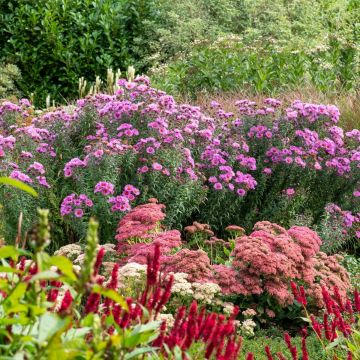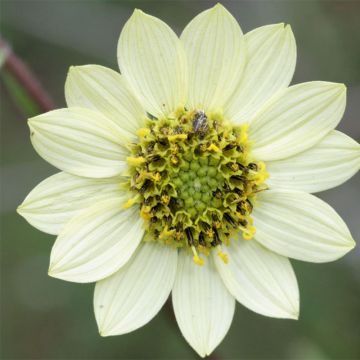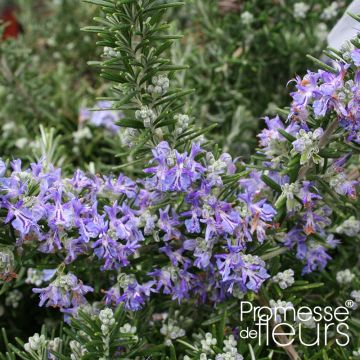

Trifolium repens Estelle


Trifolium repens Estelle


Trifolium repens Estelle
Trifolium repens Estelle
Trifolium repens Estelle
White Clover, Dutch Clover, Ladino Clover
Special offer!
Receive a €20 voucher for any order over €90 (excluding delivery costs, credit notes, and plastic-free options)!
1- Add your favorite plants to your cart.
2- Once you have reached €90, confirm your order (you can even choose the delivery date!).
3- As soon as your order is shipped, you will receive an email containing your voucher code, valid for 3 months (90 days).
Your voucher is unique and can only be used once, for any order with a minimum value of €20, excluding delivery costs.
Can be combined with other current offers, non-divisible and non-refundable.
Why not try an alternative variety in stock?
View all →This plant carries a 12 months recovery warranty
More information
We guarantee the quality of our plants for a full growing cycle, and will replace at our expense any plant that fails to recover under normal climatic and planting conditions.
Would this plant suit my garden?
Set up your Plantfit profile →
Description
Trifolium repens 'Estelle' is a variety of ornamental clover. Around a green heart bordered in black, its rounded leaflets have a soft red colour, with a tender green edge. It forms a decorative, worry-free and easy-to-grow ground cover, ideal for borders or pots. It prefers a sunny location where its colours will be more intense and moist to wet soil. It briefly flowers in the summer, with whitish-green spikes. Avoid planting it with plants that have delicate root systems, as it can be a bit suffocating.
Clovers (Trifolium) belong to the large family of legumes. The genus includes nearly 200 species found on all continents, except for Australia. Trifolium repens is native and widespread throughout Europe, as well as in North America, except for boreal zones. This perennial adapts to all types of soils, including limestone and clay. The 'Estelle' variety has soft, slightly muted colours in a mix of soft red, green and black-brown. The plant forms a carpeting, dense clump, reaching 10 to 20 cm (4 to 8in) high and spreading over time through creeping stems that root at the nodes. The unassuming flowers appear in June-July. The pleasantly scented small flowers, whitish-green and sometimes pinkish, measure 1 cm (0in) long. They are upright and gathered in heads that are initially rounded, then oval, at the end of floral stems just above the foliage. The foliage is more or less evergreen in winter, composed of leaves divided into 4 entire, rounded leaflets with toothed margins, ranging in colour from red to tender green at the heart. The pod contains seeds that easily self-sow in light soil.
Trifolium repens 'Estelle' can be used as an ornamental ground cover plant in sunny containers, with annuals or taller perennials in a range of colours, alongside the colourful foliage of morning glories or spiderworts, for example. In the garden, it is useful as a low-maintenance ground cover in hard-to-reach areas. It can also advantageously replace lawns in less trafficked areas. In containers, regular watering is necessary. Its natural charm works well in borders and rustic flower bedswith perennials in red, green, and purple hues. Avoid associating it with less vigorous perennials, especially alpine perennials, as it will dominate them.
Report an error about the product description
Trifolium repens Estelle in pictures




Flowering
Foliage
Plant habit
Botanical data
Trifolium
repens
Estelle
Fabaceae
White Clover, Dutch Clover, Ladino Clover
Cultivar or hybrid
Planting and care
Plant creeping clover 'Estelle' in any ordinary, preferably moist, well-drained, deep and well-tilled soil, even limestone. Like all legumes, it can tolerate poor soils and degraded soils it will help to enrich. This species prefers sunny and open exposures and slightly damp soil.
Planting period
Intended location
Care
This item has not been reviewed yet - be the first to leave a review about it.
Similar products
Haven't found what you were looking for?
Hardiness is the lowest winter temperature a plant can endure without suffering serious damage or even dying. However, hardiness is affected by location (a sheltered area, such as a patio), protection (winter cover) and soil type (hardiness is improved by well-drained soil).

Photo Sharing Terms & Conditions
In order to encourage gardeners to interact and share their experiences, Promesse de fleurs offers various media enabling content to be uploaded onto its Site - in particular via the ‘Photo sharing’ module.
The User agrees to refrain from:
- Posting any content that is illegal, prejudicial, insulting, racist, inciteful to hatred, revisionist, contrary to public decency, that infringes on privacy or on the privacy rights of third parties, in particular the publicity rights of persons and goods, intellectual property rights, or the right to privacy.
- Submitting content on behalf of a third party;
- Impersonate the identity of a third party and/or publish any personal information about a third party;
In general, the User undertakes to refrain from any unethical behaviour.
All Content (in particular text, comments, files, images, photos, videos, creative works, etc.), which may be subject to property or intellectual property rights, image or other private rights, shall remain the property of the User, subject to the limited rights granted by the terms of the licence granted by Promesse de fleurs as stated below. Users are at liberty to publish or not to publish such Content on the Site, notably via the ‘Photo Sharing’ facility, and accept that this Content shall be made public and freely accessible, notably on the Internet.
Users further acknowledge, undertake to have ,and guarantee that they hold all necessary rights and permissions to publish such material on the Site, in particular with regard to the legislation in force pertaining to any privacy, property, intellectual property, image, or contractual rights, or rights of any other nature. By publishing such Content on the Site, Users acknowledge accepting full liability as publishers of the Content within the meaning of the law, and grant Promesse de fleurs, free of charge, an inclusive, worldwide licence for the said Content for the entire duration of its publication, including all reproduction, representation, up/downloading, displaying, performing, transmission, and storage rights.
Users also grant permission for their name to be linked to the Content and accept that this link may not always be made available.
By engaging in posting material, Users consent to their Content becoming automatically accessible on the Internet, in particular on other sites and/or blogs and/or web pages of the Promesse de fleurs site, including in particular social pages and the Promesse de fleurs catalogue.
Users may secure the removal of entrusted content free of charge by issuing a simple request via our contact form.
The flowering period indicated on our website applies to countries and regions located in USDA zone 8 (France, the United Kingdom, Ireland, the Netherlands, etc.)
It will vary according to where you live:
- In zones 9 to 10 (Italy, Spain, Greece, etc.), flowering will occur about 2 to 4 weeks earlier.
- In zones 6 to 7 (Germany, Poland, Slovenia, and lower mountainous regions), flowering will be delayed by 2 to 3 weeks.
- In zone 5 (Central Europe, Scandinavia), blooming will be delayed by 3 to 5 weeks.
In temperate climates, pruning of spring-flowering shrubs (forsythia, spireas, etc.) should be done just after flowering.
Pruning of summer-flowering shrubs (Indian Lilac, Perovskia, etc.) can be done in winter or spring.
In cold regions as well as with frost-sensitive plants, avoid pruning too early when severe frosts may still occur.
The planting period indicated on our website applies to countries and regions located in USDA zone 8 (France, United Kingdom, Ireland, Netherlands).
It will vary according to where you live:
- In Mediterranean zones (Marseille, Madrid, Milan, etc.), autumn and winter are the best planting periods.
- In continental zones (Strasbourg, Munich, Vienna, etc.), delay planting by 2 to 3 weeks in spring and bring it forward by 2 to 4 weeks in autumn.
- In mountainous regions (the Alps, Pyrenees, Carpathians, etc.), it is best to plant in late spring (May-June) or late summer (August-September).
The harvesting period indicated on our website applies to countries and regions in USDA zone 8 (France, England, Ireland, the Netherlands).
In colder areas (Scandinavia, Poland, Austria...) fruit and vegetable harvests are likely to be delayed by 3-4 weeks.
In warmer areas (Italy, Spain, Greece, etc.), harvesting will probably take place earlier, depending on weather conditions.
The sowing periods indicated on our website apply to countries and regions within USDA Zone 8 (France, UK, Ireland, Netherlands).
In colder areas (Scandinavia, Poland, Austria...), delay any outdoor sowing by 3-4 weeks, or sow under glass.
In warmer climes (Italy, Spain, Greece, etc.), bring outdoor sowing forward by a few weeks.



















































